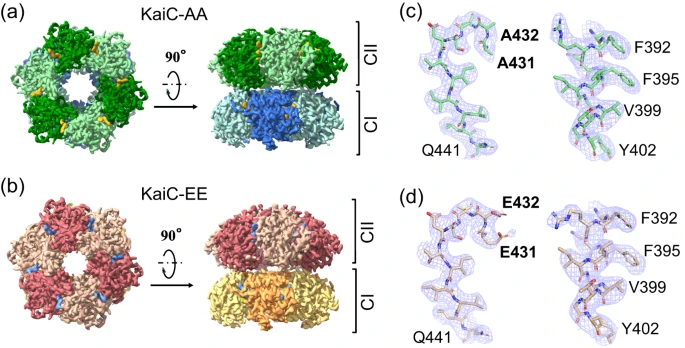Determining subunit-subunit interaction from statistics of cryo-EM images: observation of nearest-neighbor coupling in a circadian clock protein complex
Biological processes are typically actuated by dynamic multi-subunit molecular complexes. However, interactions between subunits, which govern the functions of these complexes, are hard to measure directly. Here, we develop a general approach combining cryo-EM imaging technology and statistical modeling and apply it to study the hexameric clock protein KaiC in Cyanobacteria. By clustering millions of KaiC monomer images, we identify two major conformational states of KaiC monomers. We then classify the conformational states of (>160,000) KaiC hexamers by the thirteen distinct spatial arrangements of these two subunit states in the hexamer ring. We find that distributions of the thirteen hexamer conformational patterns for two KaiC phosphorylation mutants can be fitted quantitatively by an Ising model, which reveals a significant cooperativity between neighboring subunits with phosphorylation shifting the probability of subunit conformation. Our results show that a KaiC hexamer can respond in a switch-like manner to changes in its phosphorylation level.

原文链接:https://www.nature.com/articles/s41467-023-41575-1


